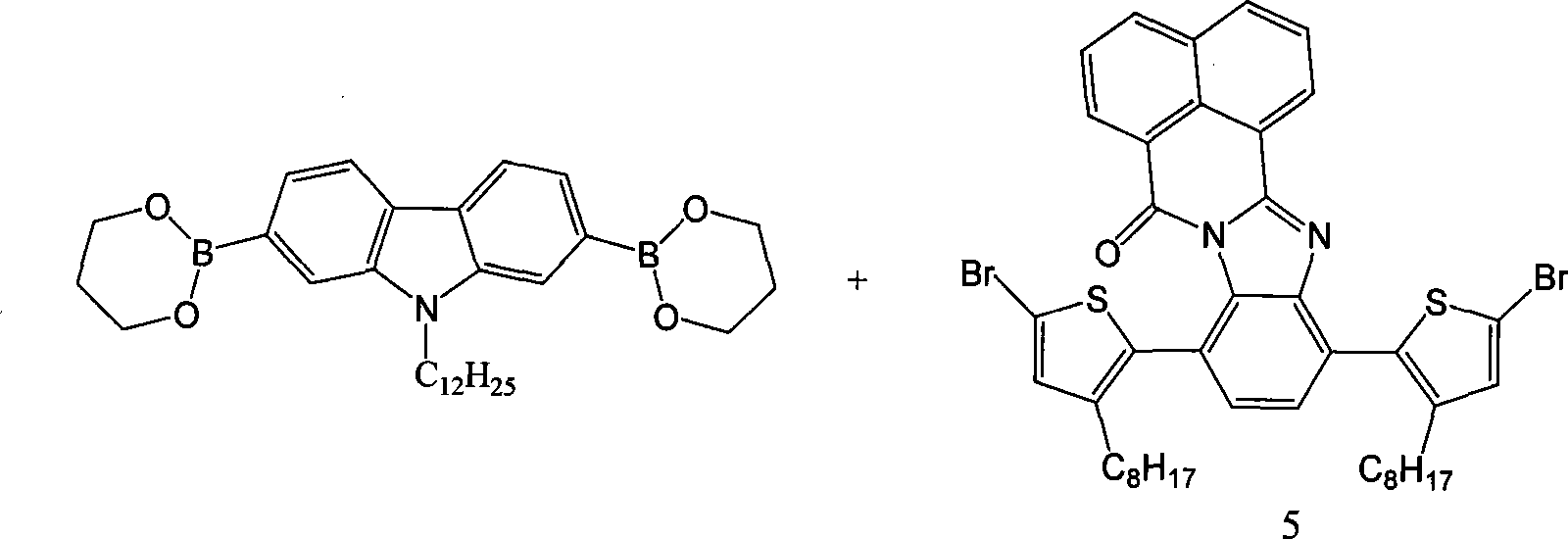Bulk heterojunction solar battery polymer donor material, synthesis and use method
A bulk heterojunction and solar cell technology, applied in circuits, photovoltaic power generation, electrical components, etc., can solve problems such as the gap in comprehensive performance, achieve good social and economic benefits, and broad application prospects
- Summary
- Abstract
- Description
- Claims
- Application Information
AI Technical Summary
Problems solved by technology
Method used
Image
Examples
Embodiment Construction
[0032] The polymer donor material proposed in the present invention is an alternating polymer based on units such as thiophene, fluorene, carbazole, and amide. The entire polymer has the characteristics of intramolecular charge transfer, and a series of solar photovoltaic battery polymers with narrow energy gaps are obtained. donor material. The key monomer is the condensed ring product obtained by dehydration condensation between various diaminated units and anhydrides. The polymer is obtained by the Suzuki or Stille coupling reaction between the bis-boronated carbazole or bis-tinated thiophene product and other bis-brominated units. The purification and post-treatment of the polymer follow the conventional methanol precipitation and various solvents. Extraction with the extractor to complete. In the later stage of the polymerization reaction, the end-capping method is used to improve the photothermal stability of the polymer. The synthesized polymer is mainly used in bulk ...
PUM
 Login to View More
Login to View More Abstract
Description
Claims
Application Information
 Login to View More
Login to View More - R&D
- Intellectual Property
- Life Sciences
- Materials
- Tech Scout
- Unparalleled Data Quality
- Higher Quality Content
- 60% Fewer Hallucinations
Browse by: Latest US Patents, China's latest patents, Technical Efficacy Thesaurus, Application Domain, Technology Topic, Popular Technical Reports.
© 2025 PatSnap. All rights reserved.Legal|Privacy policy|Modern Slavery Act Transparency Statement|Sitemap|About US| Contact US: help@patsnap.com



